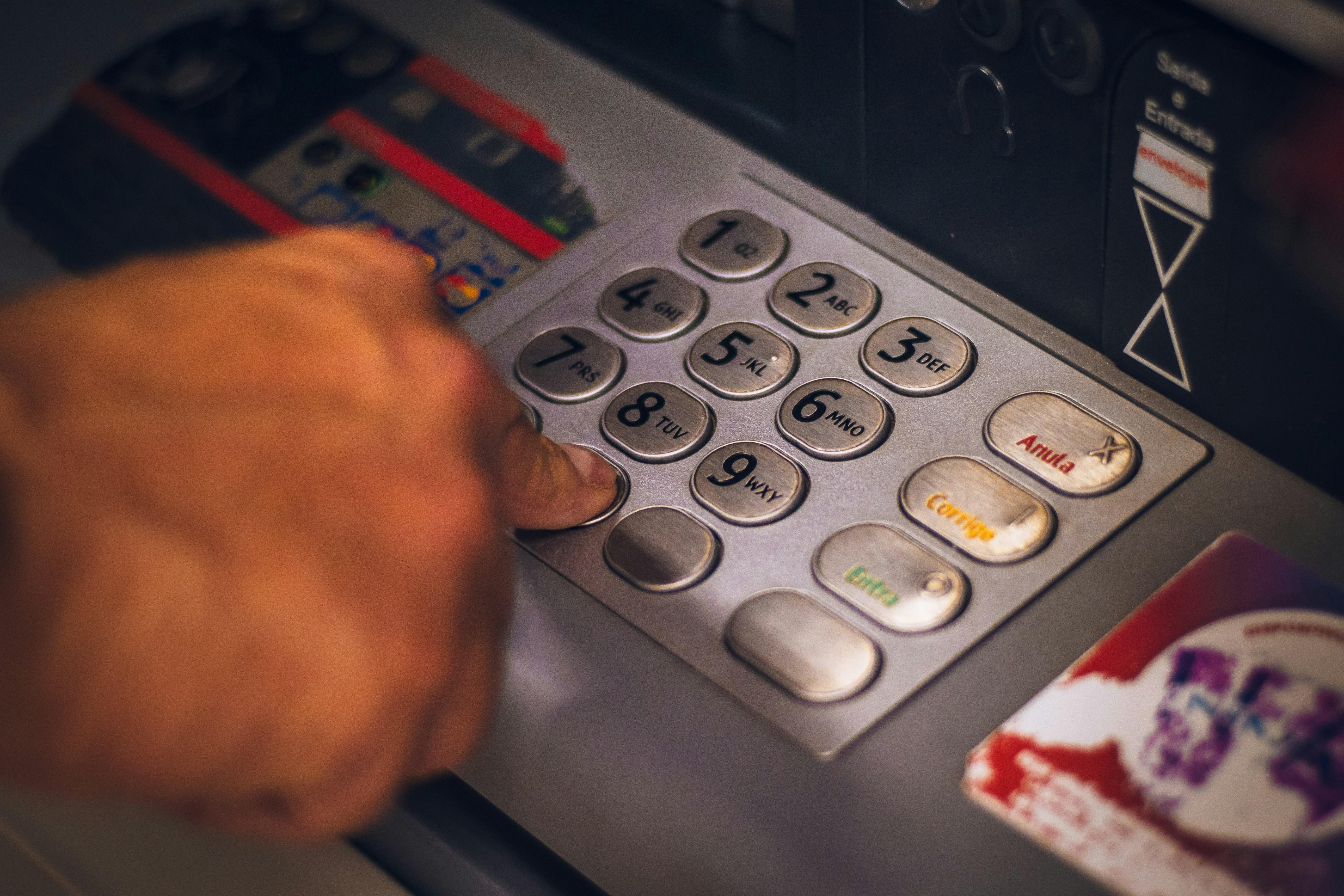Can I Transfer My Pension to My Bank Account? Your Questions Answered
If you have questions about moving pensions to bank accounts, you’re in the right place. Our expert guide covers the process, eligibility, and key considerations before doing so.
Updated:
When you purchase through links on our site, we may earn an affiliate commission. Here's how it works.

If you’re wondering whether you can transfer your pension to your bank account, you're not alone—many people ponder this query when looking to access their private pension funds. The process of transferring pension pots can be confusing, with various rules and options to consider. This article will address your concerns, breaking down the steps involved, explaining eligibility, and providing clarity on the best ways to access your funds.
Key takeaways
- Pension transfers involve moving funds between schemes or providers, often to consolidate pensions from previous employers or find better investment options.
- Before understanding how to transfer pension pots, you need to find out which type of pension you have and check if your funds are eligible.
- To transfer your pension to your bank account, you generally need to be over 55 and move your funds to an income drawdown or annuity plan.
What is a pension transfer?
Pension transfers typically involve moving pension funds from one scheme or provider to another. You may choose to do this for many reasons, such as wanting to consolidate multiple pensions from previous employers or seeking out better investment options.
Different types of pension
Before we cover how to transfer pension pots, let’s look at the types of pensions available.
Defined benefit (DB)
A DB pension provides guaranteed income in retirement based on your salary and years of service—a final salary pension, for example, is where payments are based on your salary at retirement.
Defined contribution (DC)
A DC pension fund depends on how much you contribute and how well that money has been invested.
Personal pensions
Personal pensions are a type of DC scheme you can set up privately and decide how much to contribute.
Self-Invested Personal Pension (SIPP)
A SIPP is also a DC pension, but you manage your investments yourself—a solid option if you're comfortable making investment decisions.
Workplace pension or occupational pension
This is a mandatory pension scheme in the UK, with auto-enrolment for most employees. It can be either a DB or DC scheme, but DC is more common.
State Pension
The UK State Pension is based on your National Insurance contributions, of which you need 35 qualifying years to receive the full amount. It’s available at age 66, rising to 67 in 2028.
Types of pension transfers
DB to DC
Moving from a guaranteed income pension (DB) to a flexible pension pot (DC) can give you more flexibility and control, but it also means you lose guaranteed income. It's important to get financial advice before making this transfer, especially if your DB pension has valuable guarantees.
DC to DC
This common type of transfer is often to consolidate multiple pots or to access better investment options. This can simplify management, reduce fees, and give you more control over investments.
Workplace pensions
This involves transferring a workplace pension (DB or DC) to another plan, and it often happens when changing employers.
Transferring to your bank account
You can’t directly transfer a pension to your bank account like you would transfer money between accounts, but there are ways to access your pension funds if you’re over 55.
An income drawdown
You can transfer your pension pot to an income drawdown plan, allowing you to withdraw funds regularly or as needed. These withdrawals can be paid directly into your pension bank account.
Annuities
Another option is to use your pension pot to buy an annuity—a risk-free way to provide you with a guaranteed monthly income.
Can all pensions be transferred?
Not all pensions can be transferred—there are restrictions and eligibility criteria to consider.
DB pensions
These can be transferred, but it's generally only advisable in specific circumstances. Transferring DB pensions to DC schemes is allowed, but the value of the guaranteed income is often lost. Due to this complexity and risk, transferring a DB pension requires financial advice.
DC pensions
These pensions are easier to transfer and you can usually move your funds to another DC scheme. However, older pensions may have restrictions, such as exit fees or limited transfer options.
Different types of DC schemes—such as workplace pensions—can also typically be transferred, though there may be restrictions based on the scheme’s rules or benefits.
UK state pension
Your state pension can’t be transferred to another provider.
Always check with your pension provider for specific rules and consult a financial advisor to fully understand the implications of transferring your pension.
How to consolidate your pension
By combining multiple pension pots, you can manage your retirement savings more easily. Here's how to get started.
Locate and review your pensions
You might have lost track of older pensions if you’ve had several jobs, so use services such as GOV.UK to locate any forgotten pots. Once all have been located, check their values, investment choices, fees, and any benefits or guarantees.
Check eligibility
Not all pensions can be consolidated. Seek financial advice before transferring a DB pension, as you may lose guaranteed income and other benefits.
Compare providers
Look for a scheme with low fees, good investment options, and flexibility, allowing you to adapt to changing circumstances. Compare different providers, such as SIPPs or personal pensions, to find the best option for you.
Request a transfer
Contact your providers to request a transfer. Some pension providers will handle the transfer for you, while others may require you to complete forms.
The transfer can take several weeks, and you may be notified of any exit fees during this time. Be sure to review any documents carefully.
Monitor your consolidated pension
Regularly monitor your pension, reviewing investments and making adjustments to ensure it still aligns with your retirement goals.
Should you cash out your pension?
Cashing out your pension is a big decision that requires careful thought. Here are some factors to consider beforehand.
Tax implications
The first 25% of your pension pot is usually tax-free, but the rest is subject to income tax. Cashing out could push you into a higher tax bracket, depending on the size of your withdrawal.
Future security
If you withdraw the majority of your pension now, you'll have less money for retirement. Consider how this will impact your long-term plans and if you can live comfortably without it.
Impact on other benefits
Cashing out a pension in a lump sum could affect any means-tested benefits you may receive.
Penalties
Some pensions—particularly DB schemes—have penalties or loss of guarantees if cashed out. Always understand the terms of your pension before deciding.
Inflation
Inflation can erode the value of your money over time. Withdrawing a lump sum might not be the best option if you don’t plan to reinvest it wisely.
While cashing out your pension can provide immediate access to funds, it may significantly impact your retirement security. Instead of cashing out, you may want to consider transferring your pension to another scheme, especially if you’re still far from retirement.
It’s highly recommended to seek financial advice to understand the full implications of cashing out a pension, particularly regarding your specific scheme and retirement goals.
Managing your pension in retirement
By managing your pension carefully in retirement, you can ensure your savings last and provide the financial security you need. Here are some tips:
- Choose the right withdrawal strategy: Consider whether you prefer a lump sum, income drawdown, or an annuity. An income drawdown provides flexibility, while annuities offer guaranteed income for life.
- Consider changing your pension bank account: If you want to update the bank account details that your pension goes into, contact your provider and request a change of payment details. Allow sufficient time for the change so that payments aren’t delayed.
- Invest wisely: Keep your funds invested according to your risk tolerance, even in retirement. This can help generate growth and outpace inflation.
- Withdraw only what you need: Avoid withdrawing too much too soon. Use the 4% rule as a guideline—taking 4% of your pension pot annually can help ensure sustainable income.
- Diversify income sources: Consider combining pension income with other savings—such as LISAs, as well as investments, pension credit, or part-time work to create a stable financial situation.
FAQs
How can I transfer my pension to my bank account?
To transfer your pension to your bank account, you typically need to move your pension funds to an income drawdown or annuity plan. Once the transfer is complete, you can request regular withdrawals or a lump sum to be paid directly into your bank account. It’s best to seek professional advice if you’re unsure.
Can I close my pension and take the money out?
Yes, you can close your pension and take the money out, but it depends on your age and the type of pension you have. If you're over 55, you can usually access your pension—though tax implications may apply. Consult a financial advisor to understand the best option for you.
Is there a way to cash out a pension?
You can cash out a pension, typically after age 55, by withdrawing a lump sum or converting it into an income drawdown. However, tax may apply, and you could lose future retirement income. You can also cash out if you expect to live less than a year because of a serious illness. Consult a financial advisor before cashing out to understand the implications.
